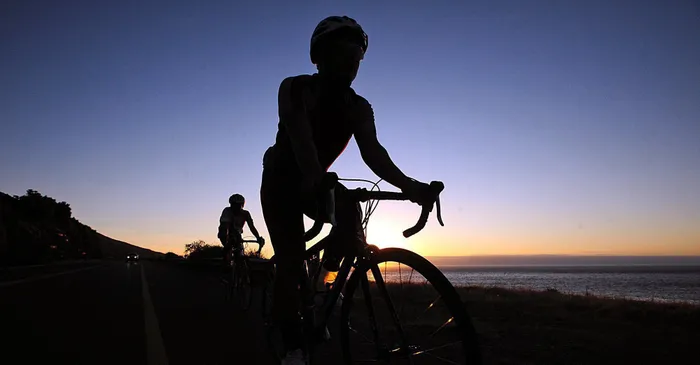Cycling bodies call on KZN Department of Transport to act on state of roads

CYCLING bodies have urged the KwaZulu-Natal Department of Transport to properly maintain the side shoulders of roads used by cyclists to ensure the safety of this group of road users. Cape Town - 160301 - Dozens of cyclists could be seen cycling along Victoria Road in preparation for the upcoming Cape Town Cycle Tour. Picture: David Ritchie
DURBAN - CYCLING bodies have urged the KwaZulu-Natal Department of Transport to properly maintain the side shoulders of roads used by cyclists to ensure the safety of this group of road users.
The call comes after cyclist Maxwell du Plooy, 23, was killed in an accident on the R102 in oThongathi two weeks ago.
KZN Cycling Development president Sean Lucien decried the state of cycling lanes in many parts of Durban and KZN, saying many of them were possible death traps.
“There is overgrown vegetation that encroaches on the cycling lanes. In addition to that a cyclist has to contend with potholes, because when trenches are dug for various purposes, the lanes are not fixed to their original form,” said Lucien.
In some instances, he added, overgrown vegetation including branches had seen the cycling lane reduced from 500m to 200m. Lucien said that limited cycling space impactd on South Africa’s chances of producing world champion cyclists, as there were no areas they could ride freely on the road.
“Training on the cycling track may be safe, but it has limitations because international competition is about tackling steep hills, flat surfaces and going downhill, but our cyclists can’t do that because of safety fears.”
He said that the increase in people using bicycles showed that cycling could no longer be associated with a race or communities, and it was important for government to provide safety for riders who were either commuting, training or riding for pleasure.
“We need to see justice for what happened and many other occasions this year where cyclists were either injured or even died because of recklessness,” he said.
Greg Stedman, head of road commission for Cycling SA, said one of their targets was to introduce bicycles to the youth in townships to unearth new talent in the sport of cycling.
Retired engineer Rick Millard said while the tragic accident may have come as a shock to some, for many road users it had been a long time in the making. He cited the 3m-high grass growing at the edge of the surfaced road, which, he added, restricted visibility and narrowed the road shoulder, which should be usable for safety purposes by vehicles, pedestrians and cyclists.
“Common sense and any roads engineer will tell you that safe speeds and safety are determined by the available sight distance along the road, especially in winding and undulating road conditions, as is the case on the R102. Undoubtedly the long grass restricting visibility conditions and narrowing the paved shoulders will have contributed to this tragedy.
“Such conditions are, however, now the norm throughout KZN on provincial roads, due to maintenance neglect, which also largely contributes to blocked drains and potholes,” said Millard.
He said because the R102 was a provincial main road, an urgent call had to be made to the provincial government to address their road maintenance responsibilities. Millard cited the 2019 Provincial Roads Annual Report which stated that 56% of surfaced roads in KZN were in poor to very poor condition.
In her budget speech this year, Transport MEC Peggy Nkonyeni indicated that many of the most heavily trafficked roads have passed their design lifespan, while some heavily trafficked roads were not designed to accommodate freight.
Transport Department spokesperson Kwanele Ncalane said 40% of the accidents recorded on the province’s roads involved cyclists and pedestrians, illustrating that the matter needed attention. He expressed the department’s concern over the behaviour of some motorists towards cyclists.
“We have noted how taxis, in particular, would sometimes encroach on the yellow line, thus making life for cyclists difficult. This is an ongoing exercise where we will continue engaging all road users to be mindful of others,” Ncalane said.
THE MERCURY
Related Topics: